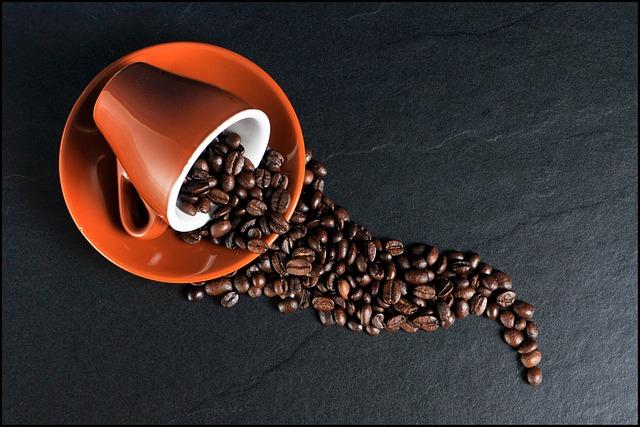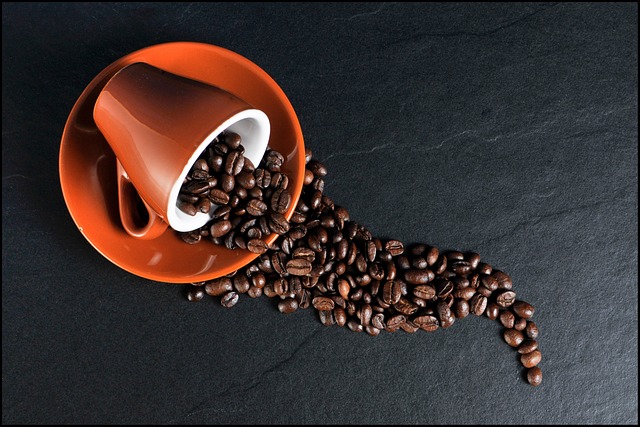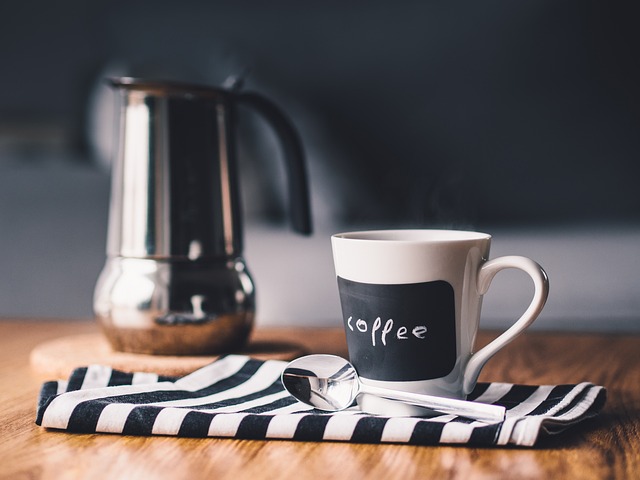Caffeine lovers, rejoice! We’ve all wondered at some point how much of that invigorating buzz we get from our daily cup of Joe. Well, the hunt for answers ends here as we unveil the secrets behind measuring caffeine in coffee. Imagine being armed with the knowledge to precisely gauge the kick in every sip you take! Today, we’ll walk you through some simple and foolproof methods that reveal the caffeine content in your beloved brew. So, grab your favorite mug, settle in, and get ready to uncover the secrets of quantifying that delightful jolt we all crave.
1. Understanding the Importance of Measuring Caffeine in Coffee: Why It Matters
Measuring caffeine in coffee is more than just a curious fact for coffee lovers. It plays a crucial role in understanding the effects of this popular beverage on our bodies. Knowing the caffeine content allows us to make informed choices about our daily coffee consumption. Here’s why measuring caffeine in coffee matters:
- Impact on health: Caffeine affects each person differently, and some individuals are more sensitive to its effects than others. By measuring the caffeine content in coffee, we can better understand how much we are consuming and how it may impact our health. This knowledge helps in managing caffeine intake if we have certain medical conditions or are trying to reduce our caffeine consumption.
- Managing energy levels: Caffeine is known for its ability to provide an energy boost. However, the amount of caffeine in coffee varies depending on factors like the type of coffee bean, brewing method, and even the serving size. By measuring caffeine content, we can choose the right type and amount of coffee to match our desired energy levels throughout the day. It can also help us avoid unwanted jitters or sleep disturbances caused by excessive caffeine intake.
Understanding the importance of measuring caffeine in coffee empowers us to make more informed choices about our coffee consumption. It helps us maintain a healthier lifestyle and lets us enjoy our daily cup of joe without any unpleasant surprises. So, whether you’re looking for a quick pick-me-up or simply savoring the rich flavors of your favorite brew, knowing the caffeine content is key to getting the most out of your coffee experience.

2. Getting to Know the Basics: What is Caffeine and How is it Measured in Coffee?
Caffeine is a natural stimulant that is found in various plants, including coffee beans. It acts as a mild central nervous system stimulant and helps to ward off sleepiness and boost alertness. But how exactly is caffeine measured in coffee? Let’s delve into the basics.
1. Determining caffeine content: The amount of caffeine in a cup of coffee can vary depending on several factors. These factors include the type of coffee beans used, the brewing method, and the size of the serving. Arabica coffee beans typically contain less caffeine compared to Robusta beans. Additionally, the longer the coffee is brewed, the more caffeine it tends to have. However, it’s worth noting that lighter roasts generally have slightly higher caffeine content than darker roasts.
2. Brewing methods and caffeine extraction: Different brewing methods extract caffeine from coffee beans to varying degrees. For example, espresso machines use high pressure and hot water to extract a concentrated shot of caffeine from finely ground coffee. On the other hand, methods like drip brewing or French press tend to have a more moderate extraction, resulting in a lower caffeine content. It’s important to remember that the amount of caffeine extracted also depends on the coffee-to-water ratio and the brewing time.
3. The Art of Coffee Brewing: Factors That Influence Caffeine Content
The caffeine content in a cup of coffee can vary greatly based on several factors. These elements can affect the brewing process and ultimately determine how much caffeine ends up in your morning pick-me-up. Let’s delve into the art of coffee brewing and explore the various factors that influence caffeine content:
Type of Coffee Bean: Different types of coffee beans contain varying amounts of caffeine. Robusta beans, for example, typically have more caffeine than Arabica beans. This is because Robusta beans have a higher natural caffeine content, making them a favored choice for those seeking an extra jolt. On the other hand, Arabica beans have a smoother and more balanced flavor profile, making them a popular choice for gourmet coffees.
Brewing Time: The length of time coffee is brewed can also impact its caffeine content. If you prefer a stronger cup of Joe, consider a longer brewing time. When coffee is brewed for a longer duration, more caffeine is extracted from the grounds, resulting in a higher caffeine content. However, be careful not to overbrew, as this can result in a bitter taste.
4. Simple and Accurate: Step-by-Step Guide to Measuring Caffeine in Your Coffee
In order to measure the caffeine content in your coffee accurately, it’s essential to follow a simple step-by-step guide. With the right tools and a little patience, you can have a clear understanding of how much caffeine is in your favorite cup of joe. Here’s how you can go about it:
1. Choose your method: There are different ways to measure caffeine in coffee, so decide which method suits you best. You can opt for a caffeine test kit, which typically includes testing strips and a color chart for accurate results. Alternatively, you can use a spectrophotometer, a device that measures the absorbance of light to determine caffeine concentration.
2. Gather your materials: To measure caffeine in your coffee, you’ll need a few items. These include the coffee beans or grounds, a grinder (if using whole beans), a scale for precise measurements, distilled water, a thermometer (if using the spectrophotometer method), a coffee pot or French press, filter paper, and a timer.
3. Prepare your sample: Start by grinding your coffee beans to your preferred fineness. If you’re using pre-ground coffee, skip this step. Next, measure out the desired amount of coffee using your scale. It’s important to be consistent with the ratio of coffee to water for accurate measurements. For example, a standard ratio is 1:16, which means 1 gram of coffee for every 16 grams of water.
4. Brew your coffee: Follow your usual brewing method, making sure to maintain the correct water temperature and brewing time. If you’re using a coffee pot, avoid using a paper filter, as it can affect the caffeine measurement. Instead, opt for a metal filter or French press, which let more of the coffee’s natural oils pass through.
5. Measure the caffeine: After brewing, let your coffee cool for a few minutes. Once at room temperature, pour a small amount of coffee into a separate container. You’ll use this sample to measure the caffeine content. If you’re using a caffeine test kit, dip a testing strip into the coffee, let it sit for a few seconds, and match the strip’s color to the corresponding caffeine concentration on the chart. If using a spectrophotometer, follow the manufacturer’s instructions to measure the caffeine absorbance.
By following these steps, you’ll have a simple and accurate guide to measuring the caffeine in your coffee. Whether you’re looking to reduce your caffeine intake or just satisfy your curiosity, understanding the amount of caffeine in your cup of coffee can be a valuable tool in managing your daily consumption. Know your coffee, measure your caffeine, and enjoy your brew with confidence!
5. Unveiling the Pros and Cons of Different Measurement Methods
In the field of measurement, there are various methods available to obtain accurate and reliable data. However, each method has its own advantages and disadvantages. Understanding these pros and cons can help you choose the most suitable approach for your specific measurement needs.
Let’s start with the pros of different measurement methods. One method commonly used is direct measurement, which provides precise and real-time data. This method allows you to collect information directly from the source, eliminating any potential biases or errors that could occur during data interpretation. Another benefit is the simplicity of direct measurement, as it requires minimal equipment and can be easily understood and applied. On the other hand, indirect measurement offers its own set of pros. This method, also known as inferential measurement, allows you to gather data indirectly by observing related factors or using statistical models. Indirect measurement can be useful when direct measurement is impractical or impossible. It can provide estimates and predictions based on existing information, providing insights into complex or abstract concepts.
6. Exploring Alternative Approaches: From Home Testing Kits to Professional Lab Analysis
When it comes to testing for various health conditions, there are now a range of alternative approaches available to people. These alternatives cater to different needs and preferences, ensuring that individuals have options that suit their comfort level and convenience. Here are some popular alternative approaches:
1. Home Testing Kits: In recent years, home testing kits have gained popularity as a convenient way to test for certain health conditions. These kits are designed to be user-friendly, allowing individuals to collect their own samples, such as blood, urine, or saliva, in the comfort of their own homes. Once the sample is collected, it can be sent to a lab and the results are delivered directly to the individual. Home testing kits are often used for DNA testing, pregnancy testing, and certain infectious diseases.
2. Point-of-Care Testing: Point-of-care testing refers to diagnostic tests that can be carried out at the doctor’s office, clinics, or even pharmacies, providing immediate results. These tests are usually simple and straightforward, giving healthcare providers the ability to diagnose and monitor certain conditions on the spot. Some common examples of point-of-care tests include rapid strep tests, blood glucose monitoring for diabetes, and urine tests to check for urinary tract infections.
7. How to Fine-Tune Your Daily Caffeine Intake: Using Measurements to Control Your Coffee Fix
Controlling your daily caffeine intake can be a tricky task, but with the right measurements, you can fine-tune your coffee fix to perfection. By paying close attention to quantities, you can ensure that you are consuming just the right amount of caffeine to keep you alert and focused without any unwanted jitters or crashes. Here are a few tips to help you manage and regulate your caffeine intake:
- Start with a baseline: Measure the amount of caffeine you currently consume in a day. This includes coffee, tea, energy drinks, and even chocolate. Knowing your baseline will help you make adjustments to your intake more effectively.
- The 8-ounce rule: A standard cup of coffee is typically around 8 ounces (237 mL). Use this as a reference point when consuming coffee. Determine how many cups of coffee you want to have in a day and stick to that limit.
- Consider caffeine content: Different types of coffee have varying amounts of caffeine. Dark roast coffee generally contains less caffeine than lighter roasts. If you want to reduce your caffeine intake, opt for darker roasts or consider decaffeinated options.
- Be aware of additives: Keep in mind that certain additives can increase the caffeine content of your coffee. For example, an espresso shot has more caffeine than a plain cup of coffee. Flavored syrups and whipped cream can also add extra caffeine. Factor in these additives when calculating your total caffeine intake.
- Experiment with brewing methods: The way your coffee is brewed can affect its caffeine concentration. For instance, French press coffee tends to have a higher caffeine content compared to drip coffee. Explore different brewing methods and find one that allows you to control the strength and caffeine level of your brew.
- Time your consumption: Consider your body’s natural energy patterns and avoid consuming caffeine too late in the day. Caffeine can stay in your system for several hours and disrupt your sleep if consumed too close to bedtime. Aim to complete your caffeine intake at least 6 hours before your desired bedtime.
8. Conclusion: Empowering Coffee Lovers with the Knowledge to Measure Their Caffeine
In conclusion, learning how to measure the caffeine content in your favorite cup of joe can truly empower coffee lovers. Armed with this knowledge, you can make more informed choices about your caffeine intake and tailor your coffee consumption to suit your needs. Here are a few key takeaways to remember:
- Understanding caffeine levels: By learning how to measure the caffeine content, you gain a deeper understanding of the variations that exist among different coffee types and brewing methods. This knowledge allows you to select beverages that align with your desired caffeine intake.
- Experimenting with brewing: Armed with information on caffeine measurements, you can experiment with different brewing techniques to lower or increase the caffeine content in your coffee. This empowers you to customize your brew to suit your energy needs throughout the day.
- Mindful consumption: Awareness of caffeine levels equips you to consume coffee mindfully. Whether you seek a quick energy boost or a more gradual release, tracking caffeine content enables you to make conscious choices that align with your energy requirements and preferences.
By providing coffee lovers with the tools to measure their caffeine intake accurately, we aim to enhance the overall coffee experience. Remember, knowledge is key when it comes to making an informed decision about your caffeine consumption. So go forth, measure your caffeine, and enjoy your coffee with confidence!
Frequently Asked Questions
Q: What is caffeine and why is it important to measure it in coffee?
A: Caffeine is a natural stimulant found in coffee that stimulates the central nervous system. Measuring caffeine content in coffee helps us understand its potency and assists those trying to regulate their intake for various health or personal reasons.
Q: How can I measure caffeine in coffee at home?
A: There are a few easy methods you can try. One option is using a caffeine testing kit, readily available online. These kits use chemical reactions to estimate caffeine levels. Alternatively, you can send a coffee sample to a laboratory for specialized testing. Lastly, you can estimate caffeine content based on the coffee’s origin, roast level, and brewing method using coffee databases and mathematical formulas.
Q: Are there any specific tools needed for measuring caffeine content?
A: While not necessary, investing in a caffeine testing kit can simplify the process. These kits usually contain the necessary chemicals and instructions. Otherwise, a scale to weigh the coffee grounds and a calculator to aid in estimating caffeine content may come in handy.
Q: How accurate are the methods for measuring caffeine at home?
A: The accuracy of home methods depends on the chosen approach. Caffeine testing kits are generally reliable, while estimating caffeine content based on variables like origin, roast level, and brewing method provides a rough estimate. Laboratory testing remains the most accurate, but it may not be suitable for everyday measurements due to cost and time constraints.
Q: What factors can affect the caffeine content in coffee?
A: There are several factors to consider. The coffee’s origin plays a role, as beans from different regions can have different caffeine levels. The roast level also matters, with darker roasts containing slightly less caffeine. Furthermore, brewing methods, extraction time, water temperature, and the coffee-to-water ratio can impact caffeine concentration.
Q: Is it necessary to measure caffeine in coffee?
A: Measuring caffeine content is not essential for everyone, but it can be beneficial for individuals who want to regulate their caffeine intake. For those sensitive to caffeine or tracking caffeine consumption for medical purposes, precise measurements can be of great value. Others may simply be curious about the caffeine content in their favorite brew.
Q: Can measuring caffeine in coffee help with brewing consistency?
A: Certainly! If you have a preferred caffeine strength for your coffee, measuring caffeine content allows you to fine-tune your brewing process. By keeping track of the variables affecting caffeine concentration, you can aim for consistently satisfying cups of coffee every time.
Q: Are there any health benefits in measuring caffeine content?
A: While measuring caffeine doesn’t inherently provide health benefits, knowing how much caffeine you consume can help you make informed decisions about your coffee consumption. This knowledge can assist in managing sleep patterns, minimizing jitteriness, or staying within recommended caffeine limits.
Q: How can measuring caffeine content be useful for coffee enthusiasts?
A: Coffee enthusiasts who value precision and experimenting with different brewing methods can find measuring caffeine content fascinating. It allows them to delve deeper into the science of coffee and its effects. Tracking caffeine levels can also enhance their ability to compare different beans, roasts, and brewing techniques, ultimately helping them refine their preferences.
Q: Can coffee without caffeine be measured using these methods?
A: No, the methods discussed in this article specifically measure caffeine content in coffee. Coffee without caffeine, such as decaf coffee, undergoes a separate process that removes most of the caffeine. The caffeine content in decaf coffee is typically negligible, so it does not require the same measurement methods.
Closing Remarks
So there you have it, a guide to measuring caffeine in coffee using easy and accessible methods! By understanding the various factors that affect caffeine content, you can now take control of your coffee experience. Whether you prefer a gentle pick-me-up or a strong jolt, these simple techniques will empower you to make informed choices about your daily dose of caffeine. From using a coffee scale to explore the beans’ origin, to identifying the roast level and experimenting with brewing methods, you now have the tools to customize each cup to your liking. Remember to stay curious, keep exploring, and savor every sip of your perfectly measured caffeinated delight! Happy coffee adventures!







